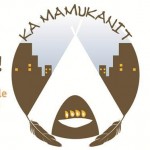
Summary of organization/program
By implementing this socio-professional insertion project for the Aboriginal youth of Montreal, we are providing an opportunity to clients who are faced with multiple employment barriers to be supported in building a life plan and in organizing their daily lives and their autonomy. This project, adapted to the needs of the participants, allows one to reflect on reintegration at one’s own pace and interests, while benefitting from the guidance and motivation required for success. Thus, the collaborative approach to promote the participation of various pertinent partners greatly enhances the delivery of personalized services and ensures real skills development.
Contact information
Geographic region
local
Participants
- Aboriginal youth aged 15-35 years old
- Young people from 15 to 35 years
- Single-parent families
- The homeless or at rick of homelessness
- People with little or no work experience
History/Background Information
First Nations Human Resources Development Commission of Quebec
In 1992, in response to political representations by First Nations, Métis and Inuit organizations, the Canadian government established “Pathways to Success” and signed co-management agreements with the aim of encouraging First Nations communities in Canada to actively participate in the delivery of services related to the training and development of their workforce.
It was demonstrated that Canadian government services of this type were not widely available to Canada’s First Nations populations. The main evidence supporting these findings was as follows:
- A high percentage of the Aboriginal population still uses First Nations languages.
- The communities are quite far from service centres.
- Existing programs are poorly adapted to the specific needs of the Aboriginal clientele.
Under a co-management agreement, the Quebec First Nations formed the Regional Aboriginal Management Board of Quebec (RAMBQ), which adopted a mandate consisting mainly of supporting the development of organizations to provide training and development for workforces of every First Nation in Quebec, in partnership with the Human Resources Development Canada authorities in their region.
The RAMBQ also provided a forum for discussion and exchange concerning issues and difficulties in the field, and made it possible to discover common directional trends. At that time, all Quebec aboriginals were represented on the RAMBQ.
The four-year agreement produced very positive results and led to the signing of a second agreement, this one transferring all necessary authority for First Nations, Métis and Inuit jurisdictional groups to assume full responsibility for the training and development of their respective workforces.
- Established: 1992
- Umbrella Organisation: First Nations Human Resources Development Commission of Quebec
Dominant Media Forms
photography
music production
web production
Objectives
- Develop an integration plan for employment and support offered to Aboriginal clients in urban areas to enable them to undertake significant changes in their lives;
- To help deal with their personal, family and work problems, in urban areas;
- Promote the conditions that will lead them to pursue and succeed in high school adult education through training preparatory studies;
- Increase the pre-employability of clients to achieve as quickly as possible employment parity;
- Prepare and assist urban clients in the identification of a professional project;
- Develop partnerships to build and develop together all the skills of the Aboriginal youth of Montreal.
Statement of Principles
Promote the conditions that will lead them to pursue and succeed in high school adult education through training preparatory studies.
Strategies
- pre-pathway process of 24 weeks;
- integration process of a duration determined according to the participant’s choice.
The pre-pathway phase is vital in order to allow Aboriginal youth to discover their abilities and potential. This component allows participants to explore basic skills, personal and professional self-esteem as well as labour market contingencies.
The integration component forms the second part of the project in which participants can choose various insertion formulas: return to school, workplace exploratory internship, workplace experience or integration into a pathway already offered at a socio-professional insertion enterprise in Montreal.
Samples of work
Funding Sources
First Nations Human Resources Development Commission of Quebec